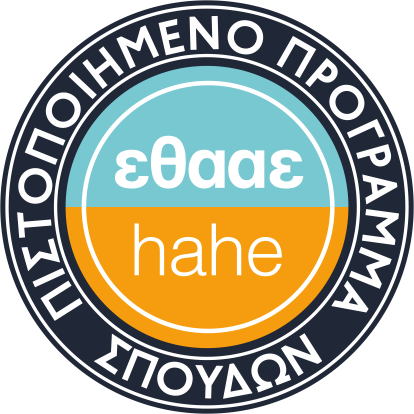| Course Code: | ΜΚ18-H |
| Course Level: | Undergratuate |
| Obligatory/Elective: | Elective |
| Semester: | 2 |
| Division: | Main Course |
| Group: | Main Course |
| ECTS Credits: | 5 |
| Hours Per Week: | 5 |
| Website: | eclass.uowm.gr/courses/ECE373/ |
| Language: | Greek |
| Content: |
- Electrical quantities and circuit elements: International System of Units (SI), voltage and current, power and energy, voltage and current sources, electrical resistance (Ohm’s law), Kirchhoff’s laws, analysis of a circuit that contains dependent sources.
- Simple ohmic elements: Resistors in series and parallel, voltage divider circuits, voltage and current measurement, resistance measurement–Wheatstone bridge, equivalence of triangle with star circuits (Δ-to-Υ).
- Techniques for circuit analysis: Method of voltage nodes with independent and/or dependent sources and special cases, method of current loops with independent and/or dependent sources and special cases, comparison of the two methods.
- Self-inductance, capacitance: Series and parallel combinations of inductances and capacitances, mutual inductance.
- First order circuits RL and RC: Natural and step response, the general solution for step and natural responses, Sequential Switches.
- Natural and step response of RLC circuits: Natural response of parallel RLC circuit, response formats, sub-, normal and hyper-damping, step response of parallel RLC circuit, natural and step response of series RLC circuit.
- Circuit analysis in the permanent sinusoidal condition (PSC): sinusoidal source and response, phasor, passive circuit elements in the frequency field, Kirchhoff laws in the frequency field, connection simplifications in series, parallel and triangle- star, source transformations and equivalent Thévenin and Norton circuits, node voltage methods and current loops at PSC, ideal transformer, phasor diagrams.
|
| Learning Outcomes: | At successful end of the course the student will be able to:
- understand, use and convert SI and empirical units in electric circuits,
- calculate the power for every element of a simple circuit,
- recognize series or parallel connections of resistors and calculate the total resistance,
- use voltage divider and current divider to solve simple circuits,
- analyze a Wheatstone bridge and use it to measure an unknown resistance,
- use Δ – Y transformation to solve simple circuits,
- use the method of voltage nodes and the method of current loops to solve a circuit,
- judge which method is preferable for each circuit,
- understand the source transformation and be able to use it for solving a circuit,
- understand the meaning of and be able to solve the equivalent Thevenin and Norton circuits of a complex circuit,
- understand and estimate the value of the load which satisfies the condition for maximum power transfer,
- know and be able to use the equations for the voltage, current, power and energy in an inductive coil or a capacitor as well as in parallel or serial combinations of such,
- understand of the concept of the mutual inductance and be able to use the dot convention to form the current loop equations for a circuit that contains magnetically coupled coils,
- calculate the transitional response of RL and RC circuits as well as their response in step excitation,
- be able to analyze a circuit with successive switching function,
- calculate the transitional response and the response to step excitation of parallel and series RLC circuits,
- understand the concept of a phasor and be able to use it to transform a circuit with sinusoidal voltage source in the frequency field,
- be able to use all the circuit analysis techniques (Kirchhoff’s laws, series, parallel and Δ - Υ simplifications, voltage and current dividers, Thevenin και Norton equivalents, voltage node methods and current loop methods) and solve a circuit in the frequency field,
- be able to analyze circuits that contain transformers using phasor methods.
|
| Pre-requirements: | None |
| Teaching Methods: |
| Method Description |
Semester Workload |
| Lectures |
50 |
| Tutorial exercises |
25 |
| Laboratory exercise |
50 |
| |
|
| Total |
125 |
|
| Validation: | • Three written progress exams (25%)
• Final written problem-solving exam (35%)
• Weekly laboratory assessments with final written report
(40%) |
| Suggested Books: |
- Nilsson/Riedel “ELECTRIC CIRCUITS” 9th Edition, Testator (Publisher): GRIGORIOS CHRYSOSTOMOU FOUNTAS, Book code in EUDOXUS: 50657746
- Papadopoulos K. “Analysis of Electric circuits” 2nd Edition, Testator (Publisher): TSOTRAS AN ATHANASIOS, Book code in EUDOXUS: 68374128
- Alexander C., Sadiku M. “Electric circuits” 4th Edition, Testator (Publisher): A. Tziola & Sons Ltd Publications, Book code in EUDOXUS: 18548946
|


